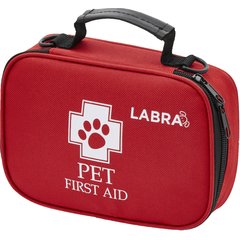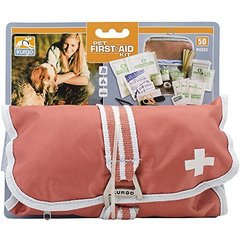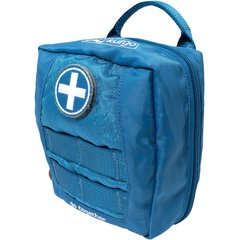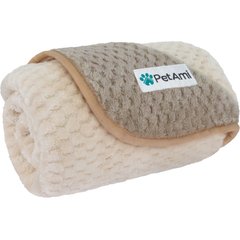What To Do if Your Dog Is Hit by a Car
fotografixx/E+ via Getty Images
A dog being hit by a car is a medical, and often a surgical, emergency.
Whether it’s your dog or someone else’s, you should seek emergency veterinary care immediately. The quicker you can get to the vet, the better the outcome may be.
It’s understandable to worry about cost, but if your dog got hit by a car and you can’t afford the vet, you have options—don’t delay!
Your emergency care team can help you figure out the best path forward for you and your pup.
Here are some tips on how to deal with the situation.
Key Takeaways
- It's always an emergency when a dog is hit by a car—seek veterinary care immediately.
- The phone number of your veterinarian and the nearest emergency veterinary hospital should be stored in your phone for quick access.
- Try your best to remain calm, be positive, and take your dog to the vet.
What Should You Do if Your Dog Was Hit by a Car?
Emergency care is always needed if your dog was hit by a car.
The goal is always going to be to get them to the closest animal hospital, but there are some things experts recommend doing along the way.
Stay Calm
First and foremost, try to stay calm. Of course, that’s easier said than done in a scary and emotional scenario like this.
Do your best to get through it calmly. Once you get your pet to the vet and they're in good hands, then you can break down, says Shalsee Vigeant, DVM, medical director of Veterinary Emergency Group (VEG) in Sugar Land, Texas.
Also, make sure to check your surroundings before running into the road to get to your dog.
While your first instinct is probably to be with your dog as quickly as you can, make sure it’s safe to do so first.
In a study conducted in 2018 looking at 140 dogs injured by motor vehicles, the survival rate was 83.2%.
Don’t give in to despair right away—remain calm and positive and take your dog to the vet.
Call the Closest Emergency Vet
While most emergency vets don’t require you to call ahead, it’s good to give them a heads-up that you’re on the way before you begin driving.
That way, they can prepare for your arrival and be ready to respond quickly.
They can also tell you the wait time and possibly recommend a different local hospital if they’re too backed up to get you in quickly.
While moving your dog may be unavoidable (since you must get them emergency help), you will want to handle your dog with care.
For future emergencies, Bethany Hsia, DVM, and co-founder of CodaPet, says it’s very important for pet parents to have an emergency plan in place that includes knowing nearby veterinary clinics and their policies regarding emergencies.
The phone number of your veterinarian and the nearest emergency veterinary hospital should be stored in your phone for quick access.
Calmly Collect Information From the Driver
If your dog was hit by someone else, quickly and calmly get information from the driver.
Get their personal information and details about what happened, like how fast they were going. This can help you paint the picture for the emergency vet so they can understand what happened.
You might also need to reconnect with the driver later to ask additional questions.
Drivers aren’t required by law to pay for vet bills, but they might also be willing to help.
Check Your Pet’s Injuries
Do a quick check of your dog’s injuries.
If your dog is bleeding, Dr. Hsia says to put gentle pressure on the wound with a clean cloth or bandage to control the bleeding while you wait for veterinary assistance.
It’s a great idea to travel with a pet first aid kit in your car, so you can be prepared with the tools you need.
Recommended Products
She also recommends watching their breathing and heart rate; if they seem unresponsive or have difficulty breathing, this information will be very important for the vet, she says.
Handle Your Dog Carefully
While moving your dog may be unavoidable (since you must get them emergency help), you will want to handle your dog with care.
You don’t want to be too timid though; instead, act quickly and intentionally.
“While you might want to be gentle and not hurt them more, being intentional and firm when picking them up and putting them in your car will help decrease the chance of them getting hurt further,” Dr. Vigeant says.
It's also important to remember that your dog is in pain and may bite anything or anyone that comes near them, even if they don’t usually show aggression.
Dr. Hsia says to approach slowly and calmly and avoid sudden movements that might startle them. You can also speak softly to reassure them.
Once you’ve gotten close to your dog, grab a big towel or blanket to wrap them in. This will help keep you from getting bit and keep them more secure, says Dr. Vigeant.
Recommended Products
Keep Your Dog Comfortable
Do your best to keep your dog comfortable while you’re on the way to the emergency veterinarian.
Keep them wrapped up and calm by speaking softly to them and gently petting them if they’ll allow it, says Dr. Hsia. She adds that you should avoid giving them food or water until a veterinarian has checked their condition.
Anesthesia may be needed for treatment, and eating beforehand can make your dog more likely to aspirate (get food into their lungs).
Bring Them to the Veterinary Hospital
Having your dog checked by a veterinarian is necessary, even if they seem fine and uninjured.
“They can have all kinds of internal injuries that you may not see initially or develop over the next few hours; a veterinarian can help determine how injured your pet may/may not have been,” Dr. Vigeant says.
Many dogs hit by cars sustain injuries to the limbs and pelvis. These can include fractures as well as lung contusions/bruising and skin trauma from road rash.
You’ll likely have to go to your local emergency veterinarian, unless your current vet offers urgent care options. It’s important to get in as soon as possible though, so don’t wait for an appointment time.
Head to the closet vet who can provide emergency care.
What Will Happen at the Vet?
Every vet office has its own way of doing things, so the exact details and order of events might be different, but you can generally expect some or all the following:
First, the vet will assess the situation to figure out the extent of the injuries.
This assessment may involve:
-
Asking you for detailed information about what happened
-
Checking the injuries visually
-
Doing diagnostics such as X-rays or blood tests
-
Putting an IV catheter into your dog’s leg to give pain medication
-
Hooking your dog up to an electrocardiogram (ECG) to check their heart
At certain emergency hospitals, you might be able to stay with your pet during this process (and after).
For example, Dr. Vigeant says that all VEG centers allow you to always stay with your pet, even overnight, if you want to.
Others may take your dog to a treatment room, and then come to you to discuss what they found, what treatments are recommended, and how you’d like to proceed.
What if Your Dog Got Hit by a Car, but You Can’t Afford a Vet?
Finances can be a big concern, especially in an emergency.
If your dog was hit by a car, it’s very important that you seek emergency veterinary care ASAP, but if you can’t afford it, there are options.
Find a CarePlus insurance plan to match your pet's needs
Learn about CarePlus, insurance plans with exclusive Chewy benefits
While the exact choices vary depending on which facility or hospital you’re at, Dr. Vigeant says VEG takes pet insurance and offers three types of financing support that you can apply for on the spot.
Some financing support options include:
-
Dedicated pet healthcare credit cards like CareCredit®
-
Personal loans from banks or online lenders
-
Payment plans at your vet’s office
-
Financial help from local animal welfare organizations
You can also try your luck with a crowdfunding platform, but you’ll have to pay for the care upfront.
Another option is to give your dog to a rescue to help with care costs, but Dr. Vigeant says they would be rehomed once they recover.
Unfortunately, if unable to provide the care needed and your dog is suffering from extensive injuries and/or is in pain, humane euthanasia may be recommended.
It’s understandable to worry about cost, but if your dog got hit by a car and you can’t afford the vet, you have options—don’t delay!
And, for some pups hit by car, even with treatment, euthanasia may be recommended if the prognosis is poor.
While this won’t help you in the moment, Dr. Hsia says you may want to consider pet insurance or saving specifically for veterinary emergencies to help stop financial stress when urgent care is needed.
What if You Hit a Dog That Isn’t Your Pet?
If you hit a dog that isn’t yours, stop immediately and ensure the safety of all involved.
“Check on the dog’s condition and try to contain any panic; if possible, secure the dog away from traffic,” says Dr. Hsia.
If the dog’s pet parent isn’t around, you can contact local animal control or law enforcement to ask what to do. They can help manage the situation and get the injured pup proper care.
Even if the dog isn’t yours, Dr. Vigeant says you can still bring them to an emergency clinic close to you. They can scan for a microchip to try to contact the owner.
If the dog doesn’t have a microchip, you can work with local animal advocate groups or rescues to try to connect the pet with their parent.
You can also post on lost and found pet sites.
Accidents happen and dogs get off leash often. Doing the right thing by the pup is always the best policy.








